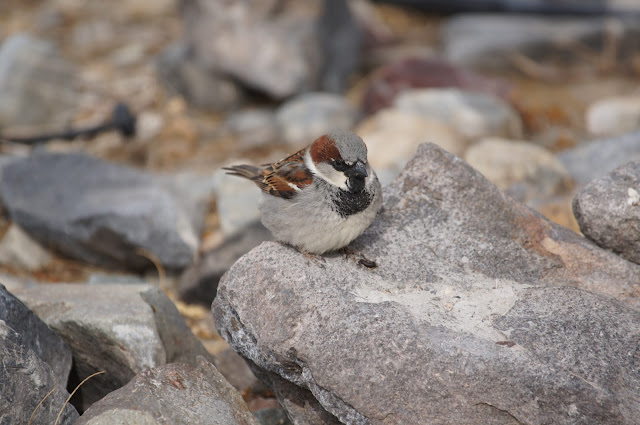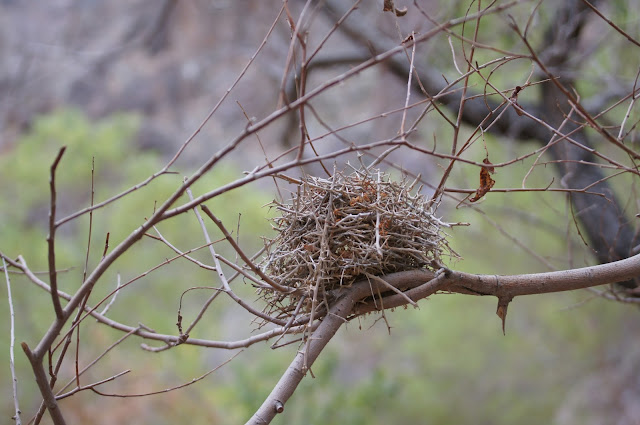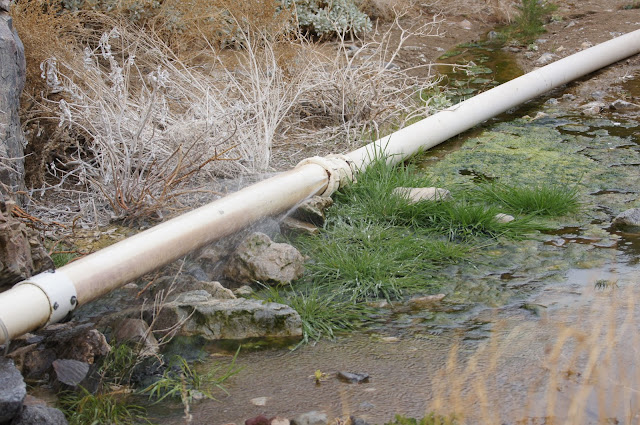Place: Panamint Springs, Death Valley National Park, California
Trailhead coordinates: 36.32756, -117.51471
Length: about 2 miles in and out
Difficulty: easy to moderate (involves some rock scrambling near the falls).
The winter of 2012-2013 has been by big desert winter. After touring the desert parks of Anza Borrego State Park, and more desert parks in Imperial and Riverside counties over winter break, I was ready to travel south again: this time with my botanist friend from overseas.
"Come in March and I'll show you the spectacular desert bloom!" I told her, back in Fall. I also suggested camping in the desert, and my friend was concerned that it might be too cold for that.
"Cold won't be a problem," I assured her. "Not where we're going, not on that time of year."
So my friend arrived, and as it turned out, I was grossly mistaken on both accounts. After a relatively dry winter, there were very few wildflowers about and the week we were there turned out to be the coldest of that winter. That taught be not to promise anything that's beyond my control (although I was ready to promise anything so my friend would come to visit, and my predictions would be accurate any other year ... )
Either way, I left the chikas in the excellent care of Papa Quail and took off with my friend into the vast California desert.
 |
| Snow-capped Telescope Peak, viewed from Father Crawly Vista |
 |
| Cottonwood Mountains Northeast of Panamint Valley, viewed from Father Crawley Vista |
 |
| House Sparrow, male |
The dirt road continues beyond the trailhead and onto the hills. We parked and entered the Darwin Wash. Not quite spring yet, but the silvery cushions of brittlebush were in bloom.
 |
| Brittlebush (Encelia farinosa) |
 |
| Pygmycedar (Peucephyllum schottii) |
 |
| A dike: a sheet of magma that rose in a rock crack and froze there, exposed by the wash water |
About that point we also met with the natural water flow of the Darwin Wash, all covered with algae:
After about half a mile the canyon was closing in on us and lovely lush willow trees filled the gap between its rocky walls. My spirit swells at the sight of the lush green against the bare desert scenery.
 |
| Salix sp. |
But the plants do add to the color splendor. Some were easily approached,
 |
| Emory's Rock Daisy (Perityle emoryi) |
 |
| Hedgehog Cactus (Echinocereus sp.) |
 |
| Maidenhair Fern (Adiantum capillus-veneris) |
 |
| Beavertail Cactus (Opuntia basilaris) |
And lucky for us - a few of them were in bloom.
 |
| Golden Suncup (Camissonia brevipes) |
 |
| Yellow-rumped Warbler |
 |
| Yellow-rumped Warbler's nest |
 |
| Say's Phoebe |
Some birds, however, stand out proudly in full color, like this lovely robin who stood his ground and allowed us to get quite near for a photo:
 |
| American Robin |
We kept on going toward the falls. At that point the comfortable trail becomes hard rock and we spent considerable time jumping from one side of the creek to the other to find good footing and to keep our shoes dry and our clothes clean of thorns.
 |
| Scrambling to the falls |
We were alone there, my friend and I, and had it not been so cold and windy, we probably would have enjoyed a swim in that little pool under the waterfall. But then again, had it been hot and sunny, we probably would have had to share the sight and the fresh water with other hikers.
As it was, we enjoyed the solitude and the pure sound of falling water and chirping birds.
 |
| Darwin Falls, named after the American Adventurer Darwin French. |
 |
| Signs of on-coming storm |
Many thanks to my friend, עננת for identifying the plants!





ha! I know this place, and these pictures! ;-)
ReplyDeletethank you so much for making me come. even though most of the flowers weren't blooming, we had a delightful time, and I enjoyed it so much!!!
And I would do it all over again! (Or chose a different destination for your next visit. I suspect you haven't seen much yet of the Northern California fabulous coastline ... )
DeleteYou had a great trip :-)
ReplyDeleteWe did indeed!
DeleteThanks!
ReplyDeleteAn area I would definitely visit sometimes soon.
Indeed :-) Thank you, my friend!
Delete